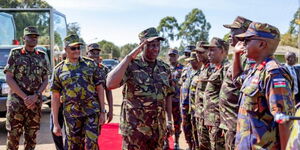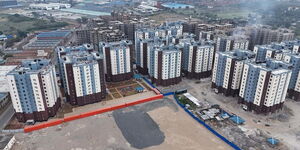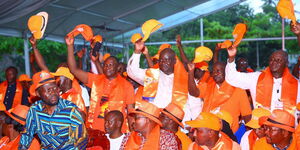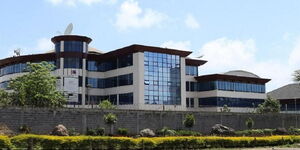What is in a memory?
As human beings, we are conditioned to associate with happier memories. That's why we tend to reminisce about happier moments, store photographs, and search for songs that remind us of joyful stages in our lives.
However, life is not a bed of roses. It comprises ups and downs, and this is why philosophers assert that life involves managing pain. Those who excel at this, tend to cope better and make greater progress in life.
In August 1998, the US Embassies in Kenya and Tanzania fell victim to coordinated and nearly simultaneous terrorist attacks.
On Monday, the US government commemorated the 25th Anniversary of the Embassy Bombings in Kenya and Tanzania. As expected, the event was emotional as various survivors gave their harrowing accounts of what transpired on that fateful day.
The bloodstained suit
Both Kenya and the United States have since undergone a process of healing and recovery. The US Embassy has since been relocated to the leafy Gigiri suburb while Kenya has shored up its counter-terrorism strategies.
This symbolises the shared qualities that define both nations: resilience and an unyielding capacity to overcome adversity.
A memory holds profound significance. As a poignant reminder of the journey the country has traversed, the US government preserves the bloodstained suit worn by the then US Ambassador to Kenya, Prudence Bushnell, on that fateful day.
This green suit, which bears bloodstains Ambassador Bushnell sustained from the tragic bombing, has found a permanent place within the National Museum of American Diplomacy's Collection.
At the time of the bombing, Ambassador Bushnell was meeting the then Minister of Commerce at the high-rise building across from the Embassy's parking lot.
"I wore it to work that day, and I wore it home that night. It's a reminder of what happened, but it's also a reminder of how we came together as a community to heal and rebuild.
"I was determined that we were going to get through this as a community even if as individuals we staggered and stumbled now and then," U.S. Ambassador Prudence Bushnell wrote in her speech statement.
She attended the meeting with two of her colleagues from the US Department of Commerce, where they discussed bilateral ties with Kenya.
The force of the explosion blew her and the others present to the floor, and she sustained injuries from flying glass and debris.
She was assisted by U.S. Commercial Officer Riz Khaliq down several flights of stairs and out of the severely damaged building to safety.
According to the National Museum of American Diplomacy, the suit is a reminder of the courage and resilience of Ambassador Bushnell and the other survivors.
It is also a symbol of the United States' commitment to diplomacy and its fight against terrorism.
The museum also noted that the suit is a powerful reminder of the cost of terrorism, but it is also a testament to the strength of the human spirit.
That morning, the U.S. embassies in both Nairobi and Dar es Salaam, Tanzania were attacked in coordinated truck bombings.
Suicide bombers parked trucks loaded with explosives outside each embassy and simultaneously detonated them.
In Nairobi, approximately 212 people were killed and an estimated 4,000 wounded, while in Dar es Salaam the attack killed 11 and wounded 85.
The bombing was carried out by al-Qaeda, a terrorist organization led by Osama bin Laden. Al-Qaeda claimed that the bombing was retaliation for the United States' military intervention in Somalia in 1993.
As a result of the bombing, the embassy was completely destroyed, and many surrounding buildings were damaged. The blast also caused widespread panic and chaos.












